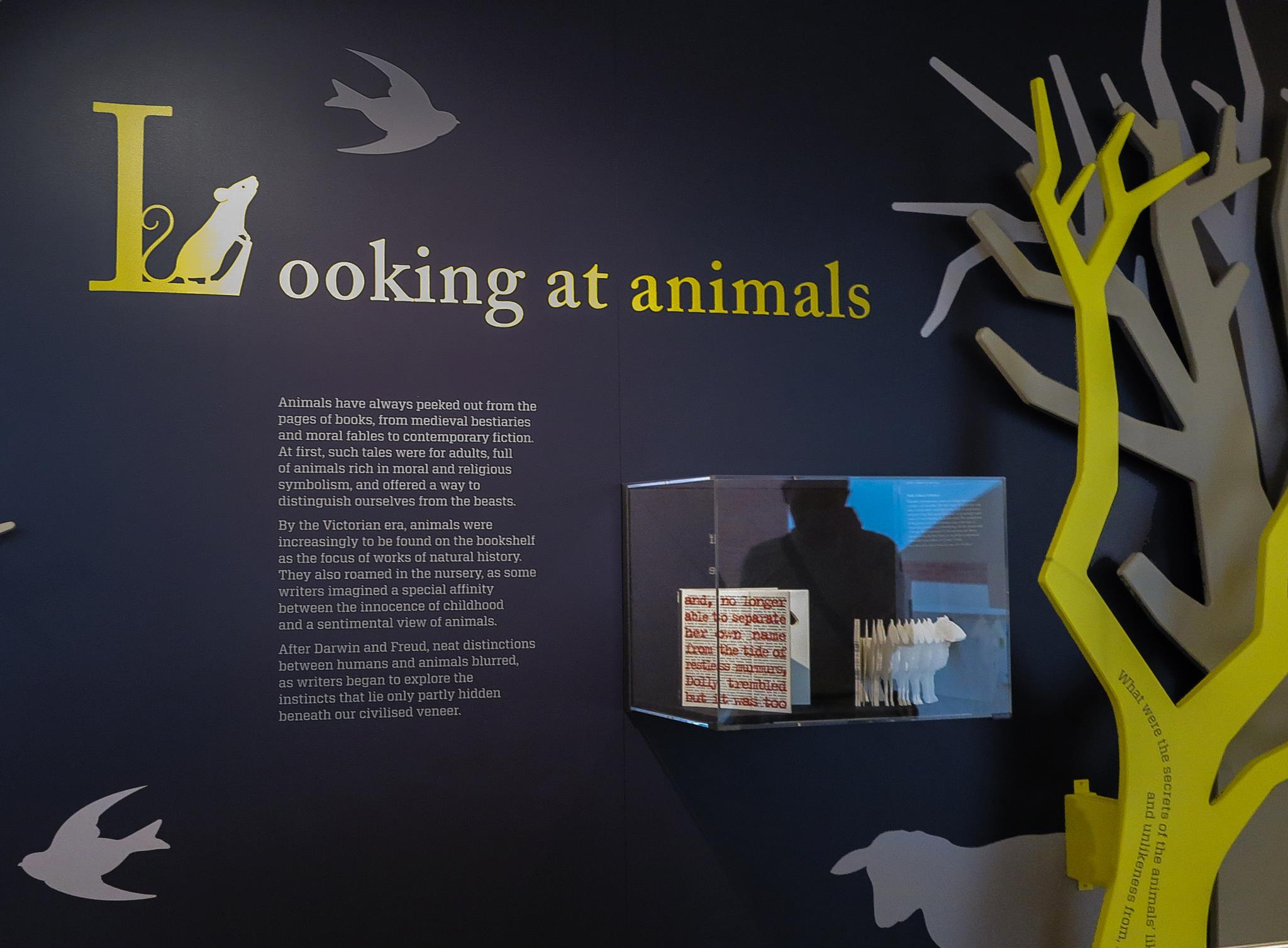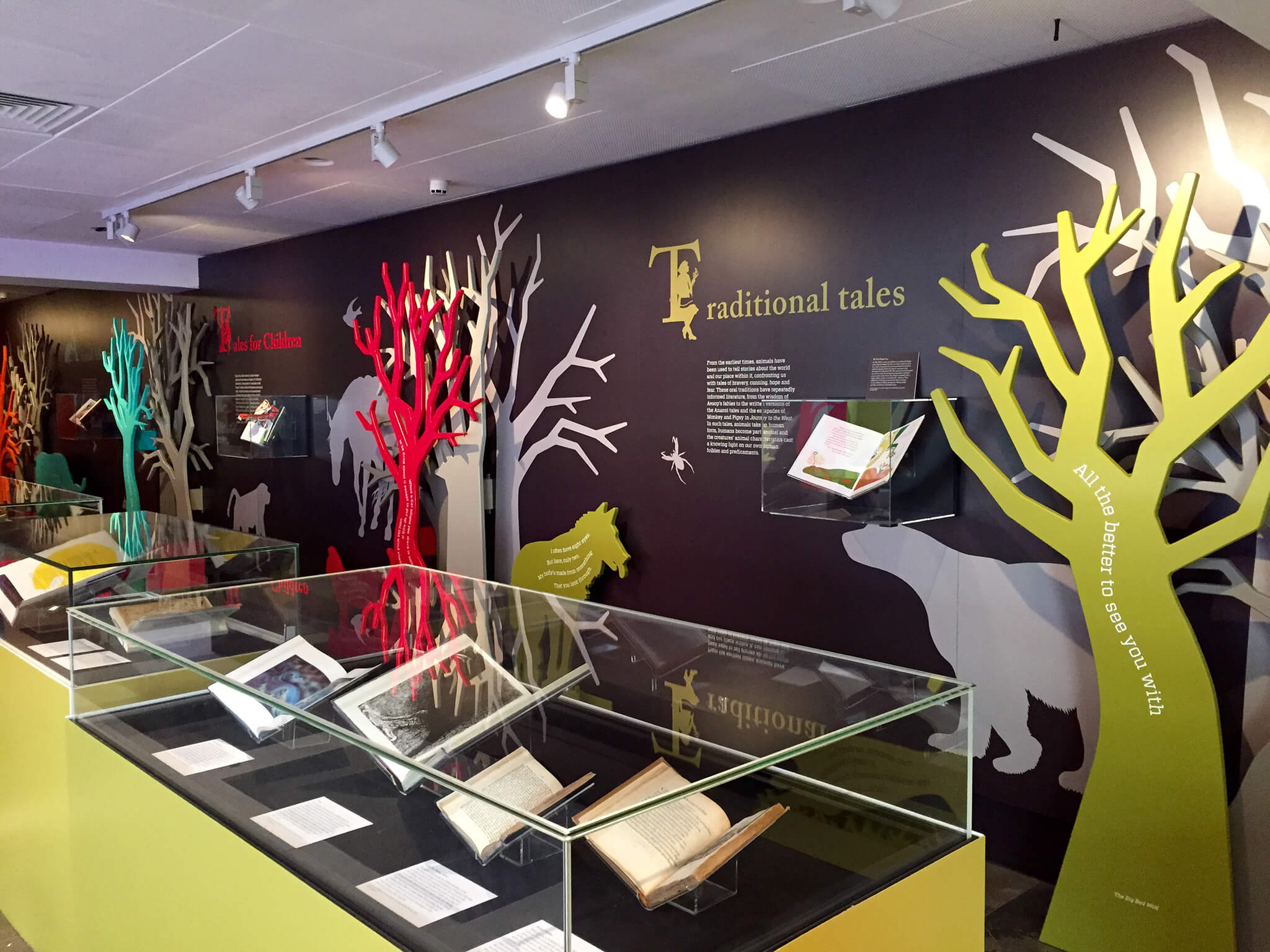

British Library exhibition Animal Tales featuring Dolly: Edition Unlimited, a pop out jig-sawed book by the artist Karen Bleitz, responding to the genetic cloning of Dolly the sheep.
From Aesop’s Fables to Ted Hughes’s Crow, the stories we tell about animals are often stories about us. This exhibition goes on the trail of animals on the page, asking why they have come to play such an important role in literature for adults and children alike.
From the earliest marks made by humans in caves to the modern-day internet full of cute cats, animals have been enduring media stars. Symbols of the sacred or the profane, the domesticated or the ferocious, animals have always fed our imagination helping us to make sense of the world and ourselves. Inspiring writers, poets, scientists and artists through the ages, a library can become the largest zoo in the world when you begin to track down the creatures lurking among the pages on the shelves.
Animal Tales explores what wild – and tamed – creatures say about us when they take on literary or artistic form and displays richly illustrated editions of traditional tales, from Anansi to Little Red Riding Hood. And be closer to nature with a soundscape based on the Library’s collection of sound recordings, with illustrations and poems by Mark Doty and Darren Waterston.
Exhibition highlights include:
One of the first children’s picture books, Comenius’ Orbis sensualium pictus (1659 edition)
Gilbert White’s The Natural history of Selborne and its antiquities, annotated by Samuel Taylor Coleridge, bound in colourful cotton dress fabric by Mrs Wordsworth and once owned by Romantic poet Robert Southey
An eighteenth century woodblock edition of Wu Cheng’en’s Journey to the West
A soundscape installation drawn from the Library’s world-leading collection of natural history recordings, along with other animal tales from the sound archive
Matthew Shaw, lead curator of Animal Tales, says: ‘This exhibition is a wonderful opportunity to explore the rich and imaginative history of animals on the page. From their central role in children’s literature to more recent explorations of love and loss, animals offer a way to reassess what makes us human. As nature writing has had a dramatic rise in its popularity in recent years, Animals Tales offers a chance to look at some of the history and background of that genre, and perhaps to think about some of the reasons for its success.’